- Home
- Prelims
- Mains
- Current Affairs
- Study Materials
- Test Series
 EDITORIALS & ARTICLES
EDITORIALS & ARTICLES
Feb 08, 2022
MSME MINISTRY STUDY CONFIRMS LOCKDOWN BATTERED SMALL BUSINESSES IN INDIA
For years now, a small section of economists, have contended that the Micro, Small and Medium Enterprises ecosystem in India has faced widespread devastation.
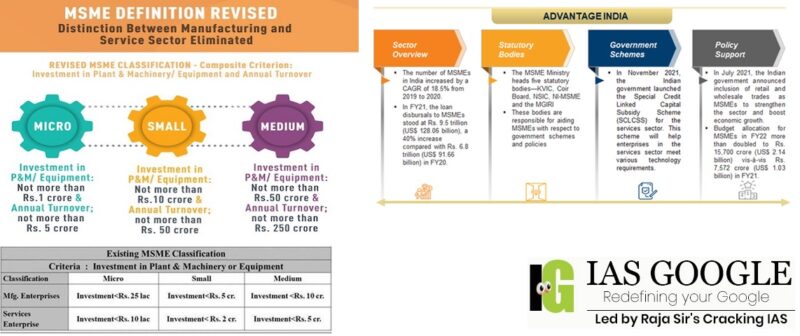 MSMEs
MSMEs
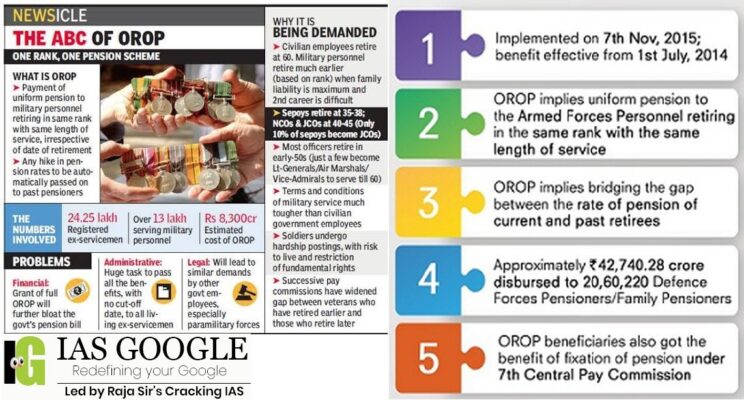 One Rank One Pension (OROP):
One Rank One Pension (OROP):
 E-waste?
E-waste?
 Swachh Bharat Mission–Urban (SBM-U) 2.0
Swachh Bharat Mission–Urban (SBM-U) 2.0
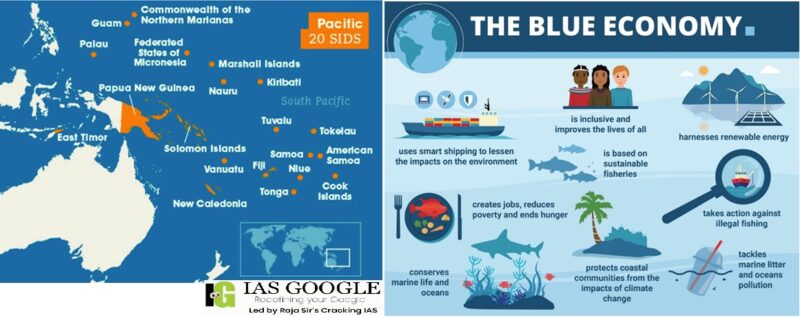 What are PSIDS?
What are PSIDS?
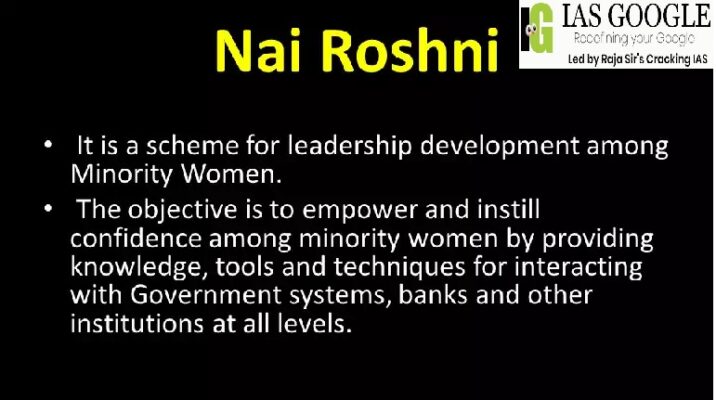 Nai Roshni Scheme
Nai Roshni Scheme
 Gene Cards?
Gene Cards?
 PM Gati Shakti Mission
PM Gati Shakti Mission
 What is pooling?
What is pooling?
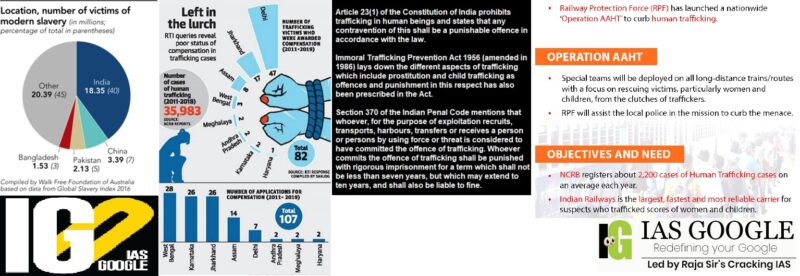 What is Human Trafficking?
What is Human Trafficking?
 MSMEs
MSMEs
- The Micro; Small and Medium Enterprises Development (MSMED) Act was notified in 2006 provides the first-ever legal framework for recognition of the concept of "enterprise" which comprises both manufacturing and service entities.
- It defines medium enterprises for the first time and seeks to integrate the three tiers of these enterprises, namely, micro, small and medium.
- The primary responsibility of promotion and development of MSMEs is of the State Governments. However, the Government of India, supplements the efforts of the State Governments through various initiatives.
- The role of the M/o MSME and its organizations is to assist the States in their efforts to encourage entrepreneurship, employment and livelihood opportunities and enhance the competitiveness of MSMEs in the changed economic scenario.
- On 9 May 2007, subsequent to an amendment of the Government of India (Allocation of Business) Rules, 1961, erstwhile Ministry of Small-Scale Industries and the Ministry of Agro and Rural Industries were merged to form the Ministry of Micro, Small and Medium Enterprises (M/o MSME).
- This Ministry now designs policies and promotes/ facilitates programmes, projects and schemes and monitors their implementation with a view to assisting MSMEs and helping them to scale up.
- Demonetization sucked out the liquidity out of the economy and put millions of small and vulnerable MSMEs out of business.
- The architectural framework of the GST is tilted in favour of the formal sector and the informal or the unorganised sector was decimated as there was no hand-holding or business relief from the government.
- The regulatory loopholes that cause a delay in getting licenses, insurance, and certifications also hamper the prospects of MSMEs and lack of financial expertise.
- Technology remains a major deterrent. Most businesses fail to reap the benefits of the latest technological developments in their sector due to a lack of expertise and awareness.
- Banks refrain from extending MSME loans since the amount remains small and also, banks believe MSMEs lack the required repayment capacity.
- Ease of doing remains a bottleneck. Most start-ups in India face the problem in the initial stages because of too many regulations and approvals.
- Halt on sales and earnings.
- Around 66% of the respondents reported a decline in profitability on account of stable fixed costs and a decline in revenue.
- Most SMEs face frequent labour issues during Covid-19, due to migrant crisis.
- In India, 89 percent of MSME owners reported a decrease in profits.
- MSMEs are also depleting their savings and leaning heavily on debt to survive.
- MSMEs might test a digital platform to sell their product, but do not continue doing so, perhaps due to lack of digital literacy or challenges with onboarding.
- Digitalization can help MSMEs to build resilience and scale their businesses through the access and use of digital financial and communication tools.
- MSMEs need ongoing support from government assistance programs, such as job retention schemes, debt moratoria, and loan guarantees and skills development.
- Emergency cash transfer payments to low-income households to help them make ends meet during the crisis.
- MSMEs need access to a wide range of financial services, especially insurance and innovative social protection measures, to increase resilience to shocks.
- RBI took some initiatives like decrease the repo rate; as a result, the bank can lend at a cheaper rate, giving some help to the MSMEs sector.
- In Mumbai, the State Bank of India has targeted to allocate ?700 crore to MSMEs.
- MSMEs are engines of growth and employment. They make up about 90 percent of formal and informal firms globally, and on average, account for about 70 percent of employment and about 50 percent of GDP. Their performance is crucial to the financial health of MSME owners, employees, and communities, particularly for low-income populations.
- Investing in MSMEs and supporting their digitalization efforts will help these businesses navigate the challenges of the COVID-19 pandemic and help them prepare for future shocks and crises.
 One Rank One Pension (OROP):
One Rank One Pension (OROP):
- It was decided to implement the OROP scheme in 2015 by the Ministry of Defence with benefits effective from 1st July, 2014.
- It implies that every pension-eligible soldier retiring in a particular rank gets the same pension, irrespective of his date of retirement.
- The implementation of the scheme was based on the recommendation of the Koshiyari committee.
- Pension of the past pensioners would be re-fixed on the basis of pension of retirees of calendar year 2013 and the benefit will be effective from 01st July 2014.
- Pension will be re-fixed for all pensioners on the basis of the average minimum and maximum pension of personnel retired in 2013 in the same rank and with the same length of service.
- Pension for those drawing above the average shall be protected.
- Arrears will be paid in four equal half-yearly instalments. However, all the family pensioners including those in receipt of Special/Liberalized family pension and Gallantry award winners shall be paid arrears in one instalment.
- In future, the pension would be re-fixed every 5 years.
- Personnel who opt to get discharged under Rule 16B of the Army Rule 1954 or equivalent Navy or Air Force Rules will not be entitled to the benefits of OROP. It will be effective prospectively.
- OROP implies that uniform pension be paid to the Armed Forces Personnel retiring in the same rank with the same length of service regardless of their date of retirement.
- OROP implies bridging the gap between the rate of pension of the current pensioners and the past pensioners at periodic intervals.
 E-waste?
E-waste?
- The discarded and end of life electronic products ranging from computers, equipment used in Information and Communication Technology (ICT), home appliances, audio and video products and all of their peripherals are popularly known as e-waste.
- Obsolete devices are replaced by new devices due to the advent of new technologies.
- Changes in lifestyle.
- End of intended usage.
- Very little investment by large-scale industrial infrastructure for recovery and recycling.
- Open burning of printed wiring boards increases the concentration of dioxins in the surrounding areas cause an increased risk of cancer if inhaled by workers and local residents.
- Recovering resalable copper by burning insulated wires causes neurological disorders
- Acute exposure to cadmium, found in semiconductors and chip resistors, can damage the kidneys and liver and bone loss.
- Long-term exposure to lead on printed circuit boards and computer and television screens can damage the central and peripheral nervous system and kidneys.
- The emission of fumes, gases, and particulate matter into the air, the discharge of liquid waste into water and drainage systems, and the disposal of hazardous wastes contribute to environmental degradation.
- Burning to recover metal from wires and cables leads to emissions of brominated and chlorinated dioxins, causing air pollution.
- The toxic industrial effluent is poured into underground aquifers and seriously affects the local groundwater quality, thereby making the water unfit for human consumption or for agricultural purposes.
- Soils become toxic when substances such as lead, mercury, cadmium, arsenic, and polychlorinated biphenyls (PCBs) are deposited in landfills.
- It can lead to data theft.
- India is the ‘fifth-largest electronic waste producer in the world’. Approximately 1.2 million tonnes of e-waste are generated annually in India according to the Central Pollution Control Board (CPCB).
- Annually, computer devices account for nearly 70 per cent of e-waste; 12 per cent comes from the telecom sector, eight per cent from medical equipment and seven per cent from electric equipment.
- The government, public sector companies and private sector companies generate nearly 75 per cent of electronic waste, with the contribution of individual households being only 16 per cent.
- Initiatives such as Extended Producer Responsibility; Design for Environment; (3Rs) Reduce, Reuse, Recycle technology aim to encourage consumers to correctly dispose of the e-waste.
- The Indian Government has introduced a point-based reward system of E-waste Recycling Credits (ERCs) for formal organizations to incentivize them to channel their e-waste through government-approved recycling centers.
- The government’s move is part of the concept of ‘waste to wealth’.
- The government passed the first law on e-waste management in 2011, based on Extended Producer Responsibility (EPR), which put the onus on the producer for the management of the final stages of the life of its product, in an eco-friendly way.
- Central Pollution Control Board (CPCB) shall conduct random sampling of electrical and electronic equipment placed on the market to monitor and verify the compliance of RoHS provisions and the cost for sample and testing shall be borne by the producer.
- E-waste is already a major catastrophe due to its harmful and hazardous effects. It will continue to create more problems if not handled or processed properly. Electronic waste contains hazardous but also simultaneously valuable and scarce materials which can be extracted.
- Classification of e-waste from normal waste and estimation of the amount of e-waste generated are the first few steps in the proper processing and disposal of e-waste. But the most important step would perhaps be raising awareness among every individual about the cause and effects of e-waste and request cooperation in the disposal of the same. Manufacturers are equally suggested to produce greener electronics.
- A digital fasting or e-fasting is usually referred to as reducing technology use — such as turning off notifications, turning our phone off while working and setting limits for the amount of time we spend on technology on a daily basis can not only be helpful for us but also minimise e-waste.
- Extended Producer Responsibility (EPR) is the responsibility of every producer of electrical and electronic equipment (EEE) for channelisation of e-waste to an authorised dismantler / recycler to ensure environmentally sound management of such waste.
- The minister provided that infrastructure projects can be taken up on a cluster basis to groups of neighbouring Urban Local Bodies (ULBs) and rural areas, so that common waste processing facilities are utilized efficiently.
 Swachh Bharat Mission–Urban (SBM-U) 2.0
Swachh Bharat Mission–Urban (SBM-U) 2.0
- The second phase of the SBM-U was launched on October 1, 2021 for a Mission period of five years.
- It envisions to make all cities ‘Garbage Free’ and ensure grey and black water (used water) management in all cities other than those covered under AMRUT.
- It aims to make all urban local bodies ODF+ and those with a population of less than 1 lakh as ODF++, and Water+, thereby ensuring that no untreated used water is discharged in open to pollute water bodies.
- It focuses on source segregation of solid waste, utilizing the principles of 3R’s (reduce, reuse, recycle), scientific processing of all types of municipal solid waste and remediation of legacy dumpsites for effective solid waste management.
- It has been designed to realize the aspiration of making all our cities ‘Garbage Free’.
- Its implementation will signify a step forward in the march towards effectively addressing the challenges of rapidly urbanizing India.
- It aims to contribute towards achievement of the Sustainable Development Goals 2030.
- It has revolutionized the sanitation space in urban India by building over 70 lakh household, community and public toilets, thus providing safe and dignified sanitation solutions for all.
- It has prioritized the needs of women, transgender communities, and persons with disabilities (Divyangs).
 What are PSIDS?
What are PSIDS?
- The PSIDS are among the smallest and most remote countries on earth. Together they comprise a land area of only half a million square kilometers scattered in the world's largest ocean, with a significant portion of that land made up of low-lying atolls that do not reach more than a few meters above current sea level.
- Papua New Guinea is the largest of the PSIDS in terms of total landmass (462,840 km2), and population (6.3 million estimated in 2007). The remaining PSIDS are under 20,000 km2, about half are under 1,000 km2 and have populations of less than one million.
- The Pacific Small Island Developing States (PSIDS) are blessed with close proximity to the vast ocean and its resources. In the PSIDS, almost 90 percent of the people live within 10 kilometers of the ocean.
- The Pacific Ocean is regarded as something that connects them as the ocean is the means for transportation, trade, and many other forms of economic activity.
- It is regarded as the ‘mother’, since it provides food, livelihoods, recreation, and solace for almost all inhabitants of the PSIDS.
- There is great diversity across the Pacific Islands region, from Fiji, which is the largest country of the group (excluding Papua New Guinea) with a population of over 900,000, to Tuvalu and Nauru, with estimated populations of approximately 11,000 each
- Pacific Island countries have substantial natural resources, they are rich in cultural diversity and are rapidly increasing their trade and digital links with global markets.
- Slow onset events—like rising sea levels, ocean acidification, and salt-water intrusion with coastal flooding swallowing arable land and white sandy beaches are impacting the lives of the people.
- The PSIDS are greatly resource-constrained.
- In the aftermath of the COVID-19 pandemic, many of these countries are at the brink of an economic crisis.
- Changing weather patterns and natural disasters.
- Loss of coral reefs.
- PSIDS collectively worked on Strategy 2030, which is a 10-year plan envisioning sustainability, low-carbon growth and development, and climate resilience, working towards achieving the 2030 Agenda for Sustainable Development.
- Vulnerable communities have been working on coastal conservation methods by constructing sea walls, dykes, and groynes.
- As a means of developing the blue economy, the PSIDS launched the Pacific Blue Shipping Partnership (PBSP) with the key focus of decarbonising the maritime shipping sector.
- Investments in a submarine fiber optic cable are set to increase connectivity in Papua New Guinea and Solomon Islands.
- Support is rooted in a commitment to the use of innovative blue financial instruments, including through the Global Fund for Coral Reefs.
- Development of the Nationally Determined Contributions (NDC) soon after the Paris Agreement. Following that were the NDC-implementation roadmaps and the Low Emissions Development Strategy (LEDS).
- PSIDS might have to focus more on mitigation and adaptation strategies that can bring about the anticipated development and economic growth in the region.
- Coral reef restoration is also essential for damping waves and trapping sediments.
- Sustainable and climate-smart agriculture for the region.
- A large-scale climate-resilient infrastructure transformation is crucial.
- Nature-based solutions for coastline protection have been proposed as suitable and cheaper alternatives with added benefits.
- This includes planting mangroves as the first line of defence to reduce the wave intensity and storm surge.
- Having seagrass to prevent soil erosion and stabilise sediments.
- The ocean is not a problem in the PSIDS’ equation, but a solution for the PSIDS providing a range of job opportunities, livelihood options, food security, eco-tourism, trade, and transportation.
- Putting the plan into action requires science-based informed decisions with well-coordinated, in-tandem, and synergetic support and enablers including finance, technology, policy and social acceptances that are aligned with the SDGs, NDCs, and development goals for green growth and blue economy development, not forgetting the blue-green recovery from the COVID-19 pandemic.
- Concerted practical actions based on bankable strategies are required from the ridges to the reefs rather than standalone silo projects.
 Nai Roshni Scheme
Nai Roshni Scheme
- It is a Leadership Development Programme for Minority Women launched in 2012-13.
- It is run with the help of NGOs, Civil societies and Government Institutions all over the country.
- It includes various training modules like Leadership of women, Educational Programmes, Health and Hygiene, Swachch Bharat, Financial Literacy, Life Skills, Legal Rights of Women, Digital Literacy and Advocacy for Social and behavioural change.
- Its objective is to empower and instill confidence among minority women, including their neighbours from other communities.
- The overall objective of the scheme is to embolden the minority women to move out of the confines of their homes and community and assume leadership roles in society.
- The scheme provides for a six-day training programme followed by handholding for a period of one year.
 Gene Cards?
Gene Cards?
- Gene Card is a searchable, integrative database that provides comprehensive, user-friendly information on all annotated and predicted human genes.
- The knowledgebase automatically integrates gene-centric data from ~150 web sources, including genomic, transcriptomic, proteomic, genetic, clinical and functional information.
- These cards indicate a couple’s chance of having offspring with sickle-cell anaemia, calculated based on a couple’s genetic composition, which is marked on their individual cards.
- Sickle cell anaemia is one of a group of disorders known as sickle cell disease. Sickle cell anaemia is an inherited red blood cell disorder in which there aren't enough healthy red blood cells to carry oxygen throughout your body.
- Normally, the flexible, round red blood cells move easily through blood vessels. In sickle cell anaemia, the red blood cells are shaped like sickles or crescent moons. These rigid, sticky cells can get stuck in small blood vessels, which can slow or block blood flow and oxygen to parts of the body.
- There's no cure for most people with sickle cell anaemia. But treatments can relieve pain and help prevent complications associated with the disease.
- Sickle cell anaemia is caused by a mutation in the gene that tells your body to make the iron-rich compound that makes blood red and enables red blood cells to carry oxygen from your lungs throughout your body (haemoglobin). In sickle cell anaemia, the abnormal haemoglobin causes red blood cells to become rigid, sticky and misshapen.
- In India, sickle-cell anaemia is largely found among tribal, Dalit and a few OBC communities, and to a lesser extent among people of other communities.
 PM Gati Shakti Mission
PM Gati Shakti Mission
- It is a Rs 100 lakh crore mega project that envisages bringing together on a common digital platform.
- The various infrastructure activities planned and executed by 16 Central ministries and departments — including Railways, Roads and Highways, Power, Telecom, Shipping & Aviation, among others.
- Gati Shakti is a state-of-the-art digitally integrated platform that uses technology to make infrastructure related information available to all key stakeholders at various levels — central, state, urban civic bodies and even panchayats.
- It will enable the implementation of countless projects to get simplified, more efficient, and most importantly, make them tremendously speedier.
- The Gati Shakti master plan is meant to introduce multimodal connectivity to various economic zones.
- It aims to cut through inter-ministerial silos and lay solid groundwork for holistic infrastructure development in the country.
- It targets integrated planning and coordination towards the implementation of seamless movement of people, goods and services.
- It will reduce logistics costs, which will benefit local industries.
- Its focus is to strengthen small farmers and the rural economy.
- The Centre is also looking to boost bundling of renewable energy in existing thermal Power Purchase Agreements (PPAs).
 What is pooling?
What is pooling?
- The government is planning to pool all solar power procurement in a given period and ask that all buyers pay an average of all the tariffs that are contracted in a pooling period.
- Therefore, if one PPA is signed at an agreed tariff of Rs 2.5 (per unit) based on a discovered price by Solar Energy Corporation of India (SECI), and the discovered price in the next bid by SECI is Rs 2.4, then the tariffs will be averaged out with both the buyer under the new PPA and the earlier PPA paying the resultant average tariff.
- The Centre is encouraging bundling of renewable energy with thermal power under existing PPAs.
- The power ministry permitted thermal generation companies to supply power to customers from their renewable energy projects under the existing PPAs for coal-based electricity, with gains from the bundling of renewable energy to be shared between generators and discoms on a 50:50 basis.
- A move to bundle cheaper renewable energy in these PPAs will allow discoms to lower their average cost of power procurement.
- A consistent fall in solar power tariffs due to the falling price of solar panels has led to discoms waiting for a further fall in tariffs rather than contracting PPAs at current prices.
- A move to pool tariffs could help speed up procurement of solar power.
- Renewable Purchase Obligation (RPO) mandates that all discoms meet a minimum specified quantity of their requirements from renewable energy sources.
- Aiming to boost installed renewable energy capacity to 500 GW (Gigawatts) by 2030.
- A move to pool tariffs could help speed up procurement of solar power by addressing concerns among discoms of losing out on lower solar tariffs in the future.
- India lying in tropical belt has an advantage of receiving peak solar radiation for 300 days, amounting 2300-3,000 hours of sunshine equivalent to above 5,000 trillion kWh.
- Solar power in India is a fast-developing industry as part of the renewable energy in India. The country’s solar installed capacity was 44.3 GW as of 31 August 2021.
- India has established nearly 42 solar parks to make land available to the promoters of solar plants.
- India’s Intended Nationally Determined Contributions (INDC’s) commitment include 100 GW of solar power out of 175 GW renewable energy by 2022.
- The sector also has immense potential to create new jobs; 1 GW of Solar manufacturing facility generates approximately 4000 direct and indirect jobs.
- Advancements are underway for storage, which has the potential to revolutionise this sector globally, till then dependence on fossils can be reduced by gradually increasing the share of renewables.
- India is expected to be 8% of global solar capacity by 2035. With the future potential capacity of 363 Gigawatts (GW), India can be a global leader in term of encasing energy sector advantages.
- India facing problems in fulfilling its energy demand, solar energy can play an important role in providing energy security. Debate of global warming and climate change is compelling the world to move from fossil-based energy towards clean and green energy. With its pollution free nature, virtually inexhaustible supply and global distribution, solar energy is a very attractive energy resource.
 What is Human Trafficking?
What is Human Trafficking?
- Human Trafficking, especially of women and children, for sexual exploitation, forced marriage, domestic servitude, organ transplant, drug peddling etc. is an organised crime and the most abominable violation of human rights.
- They are being trafficked for slavery, illegal adoptions, organ transplants, working in circus, begging and entertainment industry.
- The operation will mainly focus on rescuing women and children from the traffickers.
- The operation is to be implemented in every train operated by the Indian Railways. The Indian Railways operates 21,000 trains in all.
- According to RPF, railways are the most reliable mode of transportation for the traffickers.
- There is need to strengthen the intelligence machinery.
- There is a need for an action plan to identify, investigate, rescue and rehabilitate victims of the offence.
- Cyber cells would start patrolling the web/social media to look for digital footprints of Human Trafficking and added that the focus should be more on trains originating from districts bordering Nepal, Bangladesh and Myanmar.
- Educated children and their families are much more aware, alert and mature, and they can comprehend the risks of child trafficking quite well.
- Effective policymaking is critical to reform.
- Many cases have been filed under the recent Protection of Children Against Sexual Offences Act (2012) and Immoral Traffic (Prevention) Act, which have successfully translated in increased convictions, demonstrating how legislating can curb child trafficking.
- An ecosystem for child trafficking gets silent approval when demand for child labour is commonly used in businesses like retail, hospitality, etc.









 Latest News
Latest News General Studies
General Studies